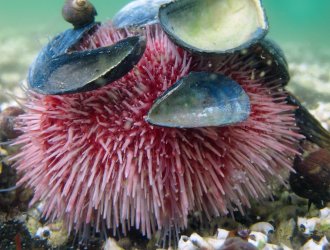
Sustainable coasts
The coast is one of the world's most productive ecosystems. It holds enormous opportunities for nutrition and solutions to the climate and nature crisis. The challenge is to restore, preserve and develop the ecosystems along the coast in the best possible way.
Norway has the world's second longest coastline, and almost six times more area in the sea than on land. The sea and the coast contain enormous resources, and industries such as oil and gas, fisheries and aquaculture, tourism and energy production originate from these resources. And this is just the beginning; in the future, many new marine industries will emerge.
The marine ecosystems along the coast, such as kelp forests and eelgrass meadows, are often referred to as blue carbon. These are unbeatable at capturing and storing CO2, but they are also vulnerable systems that we must manage, preserve and restore in the best way. We must reduce emissions and prevent pollution, in addition to slowing down ocean warming.
Coastal monitoring is key. Through monitoring, we can identify undesirable impacts at an early stage and gain knowledge about long-term climate change.
Having a sustainable management of our coast is of enormous importance. It can reduce the climate footprint, preserve biodiversity, ensure food security, protect against erosion and storms, and create new business opportunities.
This is how NIVA contributes
Our expertise includes:
-
Knowledge about Norway's largest botanical environment for freshwater and ocean, with expertise in phytoplankton, fouling algae, and aquatic plants.
-
Knowledge about the ecology of blue forests (organisms and ecosystems associated with seaweed, kelp, eelgrass and salt marshes)
-
Oceanography and biogeochemistry
-
Modelling, both of habitat and coastal ecosystems of varying complexity
-
Environmental monitoring
-
Sensor-based monitoring, NIVA hosts two national infrastructures for drones and FerryBox
-
Aquaculture
-
Land-ocean interactions
-
Coastal management and the law of the sea
-
Knowlegde about ecosystem services
-
Knowlegde about Nature-based solutions and restoration
-
Knowlegde about The Water Framework Directive and ecological status in coastal waters
-
Scientific diving
Why does NIVA work with sustainable coast?
The UN Convention on Biological Diversity provides guidelines for how the international community should manage natural resources. This is reflected in NIVA's professional activities. Knowledge of biodiversity is an important tool for monitoring the state of the environment. Through the EU Water Framework Directive, Norway is obliged to report the state of the environment, based on biological conditions.
In addition to researching coastal ecosystem services and its role as a climate actor, we investigate how key species affect each other and the state of ecosystems.
Contact us if you want to know more about how we can contribute in this area.


.jpeg)